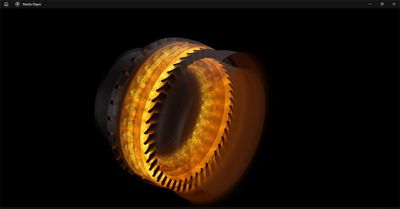With the release of 2024 R2, Ansys Fluent fluid simulation software users can take advantage of a number of new enhancements to their computational fluid dynamics (CFD) tools, including new physics added to the Fluent multi-GPU solver, solver accuracy improvements across aerospace and electrochemical applications, and new pre-processing workflows for enhanced meshing accuracy. You can leverage these new software updates to explore new design options and build and test the next generation of cutting-edge products.
Figure 1. Watch a short, 5-minute technical overview of what's new in Fluent at 2024 R2.
Expanded Use Cases and Hardware Options for the Fluent Multi-GPU Solver
In prior releases, the Fluent multi-GPU solver only supported NVIDIA GPU cards. In 2024 R2, we have expanded our GPU hardware options to include AMD GPUs on the Instinct MI200 and MI300 series accelerators. As new GPU hardware becomes available, Ansys is committed to supporting new hardware options so users can benefit from the latest technologies.
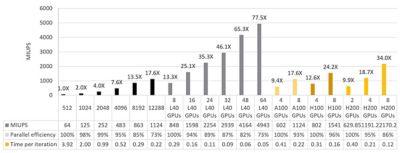
Figure 2. Performance gains based on type and number of NVIDIA GPU cards using the DrivAer model. *Performance stat of note: 40 minutes to complete transient scale-resolved case with 10,000 time steps. (MIUPS = million cell iteration updates per second)
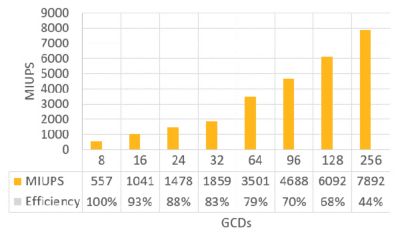
Figure 3. Excellent scalability shown on AMD-based platform using four AMD M1250X 64GB GPUs; test case includes 250 million elements running single-precision LES
Outside of hardware compatibility, we have also introduced new physics into the Fluent GPU solver to open the door to new use cases and industry applications.
For aerospace and defense (A&D) applications, the Fluent GPU solver now supports compressible flows and far-field boundary conditions. This enables engineers working on high-speed vehicles in the transonic to supersonic regime the ability to run their studies on GPUs. Users working in environmental, atmospheric, or other industrial applications can also benefit from the introduction of compressible flows.
Check out the white paper “Ansys Fluent Native Multi-GPU Solver: CFD Validation Studies in Version 2023 R2” to learn more about solver accuracy compared with the traditional Fluent CPU solver and experimental data.
Additionally, for engineers in the high-tech, automotive, and manufacturing spaces, anisotropic thermal conductivity is now supported. This opens up the door for studies involving electric motors, printed circuit boards (PCBs), heat exchangers, and more.
Discrete ordinance (DO) radiation is now fully supported, enabling advanced combustion studies for engineers working on propulsion systems such as gas turbines, jet engines, electricity production, and more.
Finally, several scalability improvements have also been made in 2024 R2. In 2024 R1, we saw scalability up to the 10-million-plus cell range, but scalability tapered off beyond that. Development efforts have been made to improve scalability in 2024 R2. Now, you can see performance and speedup improvements to a much lower number of cells per card. Figure 4 shows over 70% parallel efficiency at fewer than 4 million cells per card.
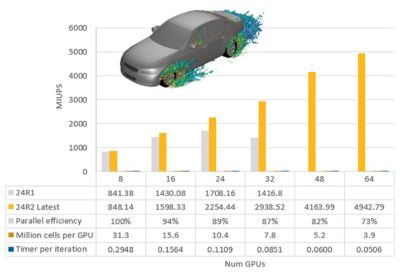
Figure 4. Significant scalability enhancements made to the Fluent GPU solver in 2024 R2 vs 2024 R1
Watch the 2024 R2 Fluent GPU solver webinar on demand to learn more.
User Experience Improvements for the Fluent Web Interface
Many CFD simulations running on cluster, on-premises, or remotely can take hours or days to run. Often, these simulations run without a graphical interface. For such cases, users have to rely on text outputs to evaluate simulation progress and wait for simulations to end to evaluate the results. The Fluent web interface provides a way to convert the nongraphical simulations to a web-based session with interactive graphics. This enables you to view simulation results live, in real time, as calculations are running. This means that engineers can now monitor their results and make changes before the problem has been solved, enabling huge time savings and minimizing rework effort. In addition, users can share their unique Fluent web interface URL with colleagues, enabling colleagues to work together on the same project and improving communication and collaboration between engineers and stakeholders.
Figure 5. A short demonstration of the 2024 R2 Fluent web interface
In 2024 R1, support was only available for post-processing and solution monitoring in the Fluent web interface. In 2024 R2, limited model setup support is now available, including material setup, boundary condition setup, and more.
Many usability improvements have also been made to improve time efficiency in the workspace, including multiselect context menu, multi-edit support, copy/paste within and across sections, grouping items in list view, and more. The Fluent web interface is available to any Fluent user of any license level starting at version 2024 R1 and is accessible from your Fluent launcher.
Watch the 2024 R2 Fluent “What’s New” webinar on demand to learn more.
Advancements for A&D Applications
Fluent has accurate and robust solver numerics for A&D external aerodynamics studies from low subsonic to high hypersonic speeds. For 2024 R2, convergence and accuracy for hypersonic flows is greatly improved with a new three-phase solution steering method and modified thermal nonequilibrium model for the density-based solver.
The Fluent Aero workspace, a dedicated tool for external aerodynamic studies available from your Fluent launcher, has numerous updates in 2024 R2. Workflow improvements have been made that enable users to automate turbulence model selection based on the Reynolds number. This will improve overall workflow for aerodynamic studies spanning a wide range of Reynolds numbers. Additionally, automated polyhedral unstructured mesh adaption (PUMA) is now available for each design point using the combined Hessian indicator for improved solution accuracy. Finally, parametric post-processing is now available, which enables users to post-process numerous design points simultaneously and create several simulation animations quickly and easily.
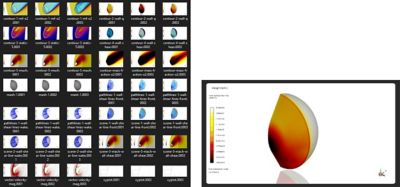
Figure 6. Reentry capsule animation with numerous design points using parametric post-processing
In addition, the virtual blade model (VBM), used to provide bulk effects on flow fields for rotating blade applications such as helicopters and drones, is now compatible with the DBNS solver and the transient solution method within the Fluent Aero workspace. This will enable compatibility with automated Fluent Aero solver best practices and time-dependent flow conditions.
Outside of the Fluent Aero workspace and available within the traditional Fluent interface, enhancements have been made to the density-based numerics solver (DBNS), including numerical stabilization and solution schemes to improve speed to convergence and overall solution robustness for high-speed applications.
Finally, the Fluent Icing workspace, available on the Fluent launcher for engineers working on aircraft ice accretion, has a new impact ice density model for swept-wing ice shapes with scallops. This will provide greater accuracy when modeling ice accretion, including tunable parameters and improved rime ice accuracy. This capability is critical in understanding ice accretion’s impact on overall external aerodynamic performance, including lift and drag.
To learn more, view the webinar “2024 R2 Fluent Advancements in Aerospace Applications.”
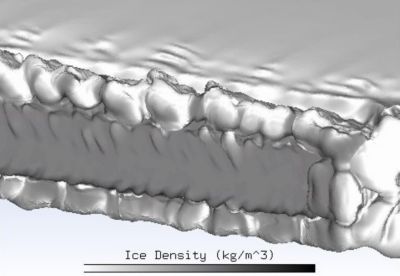
Figure 7. New impact ice density model available within the Fluent Icing workspace (available with a CFD Enterprise license)
New Models Available for Advanced Electrochemical Studies
The surge in the electric vehicle (EV) market underscores the pressing need for simulations that will accurately predict safety and reliability risks driven by battery thermal abuse. In 2024 R2, developments have been made to provide two new battery models to accurately capture thermal abuse propagation and pinpoint potential failure and safety risks early, even before prototypes are built.

Figure 8. New battery venting model available in 2024 R2 Fluent software
When a battery undergoes thermal abuse, gases are produced that could lead to a potential fire hazard. A new battery venting model available in 2024 R2 accurately models venting gas during thermal abuse or high-temperature reactions. This will help engineers predict when gas may vent, including its velocity and temperature profile.
In addition, a new battery immersion cooling model is available that predicts temperature and vapor fraction fields of cooling liquid, including at boiling conditions. This model has been extended to be compatible with the multiphase model, which is necessary in modeling two-phase fluid flow.
For users modeling and designing fuel cells, we have a new proton exchange membrane fuel cell (PEMFC) cold-start model available in 2024 R2. Cold-start modeling is critical since PEMFC devices may need to start and operate under freezing conditions. Ice can form inside the PEMFC device, which could block species diffusion and reduce reaction areas in the catalyst layer. This new model will help engineers predict possible reliability risks when these devices operate under such real-world environmental conditions.
Gas Turbine Combustion Enhancements
In 2024 R2, several improvements have been made to Fluent software’s combustion capabilities. The flamelet-generated manifold (FGM) method now has an improved strain rate equation when used with large eddy simulation (LES) and captures the trend of lean blowout more accurately.
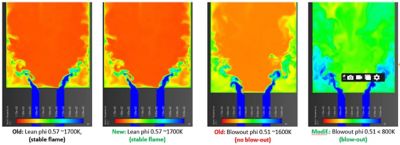
Figure 9: Accurate prediction of lean blowout limit with strained FGM
For gas turbine applications, there have been improvements made to the perforated wall model for conjugate heat transfer (CHT) simulations. Perforations allow cool air from the outside of the liner to enter to the combustion chamber, which is critical in keeping the chamber at reasonable temperatures. Enhancements to the perforated wall CHT modeling approach no longer require resolving the cooling holes at the mesh level, but rather use a source-term approach at the solver level to simulate the effects of the cooling holes without creating a mesh. This enables far less computational spend and increased simulation speeds.
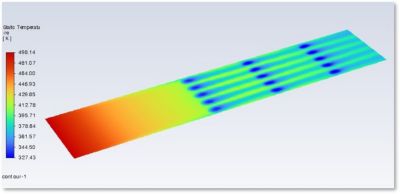
Figure 10. Perforated wall CHT simulation in 2024 R2 Fluent software
General Productivity Enhancements in 2024 R2
3-8X Speedup Improvements for Nonconformal Interfaces
Significant performance improvement for the auto-pairing of cases with large numbers of zones or interfaces have been made in 2024 R2. Users can expect to see speedups ranging from three to eight times faster, depending on the specific geometry used.

Figure 11. 2024 R2 speedup improvements for nonconformal interfaces compared against 2024 R1
Parametric Optimization Entirely Within Fluent Software
In 2024 R2, optimization capabilities of Ansys optiSLang process integration and design optimization software are now available entirely within the Fluent interface. This enables users to create a smart and efficient design of experiments (DOE) for their parametric models and find the optimum design according to certain objectives and constraints — all without leaving the Fluent interface while optiSLang software is running in the background. Furthermore, geometry changes can be implemented within Fluent software through mesh morphing, enabling users to optimize their geometry as well.
Figure 12. Short demonstration of the new optimization capabilities available within the Fluent interface in 2024 R2
Fluent Software Meshing Capability Updates
In 2024 R2, a new capability is available within the watertight meshing (WTM) workflow to create layered meshes inside thin regions. The new algorithm automatically transitions to unstructured mesh in locally bulky regions and has conformal connections between the layered and nonlayered mesh regions. This is useful for numerous applications involving these parts within the model, including batteries, fuel cells, and any CHT problems involving thin solids.
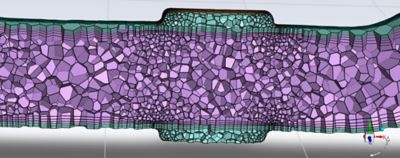
Figure 13. Thin-volume meshing with boundary layers in bulk region
This is just an overview of the top features available in 2024 R2 Fluent software. To learn more, access the now publicly available Ansys Help 2024 R2 documentation.
Download 2024 R2 Fluent software at the Ansys Customer Portal.













